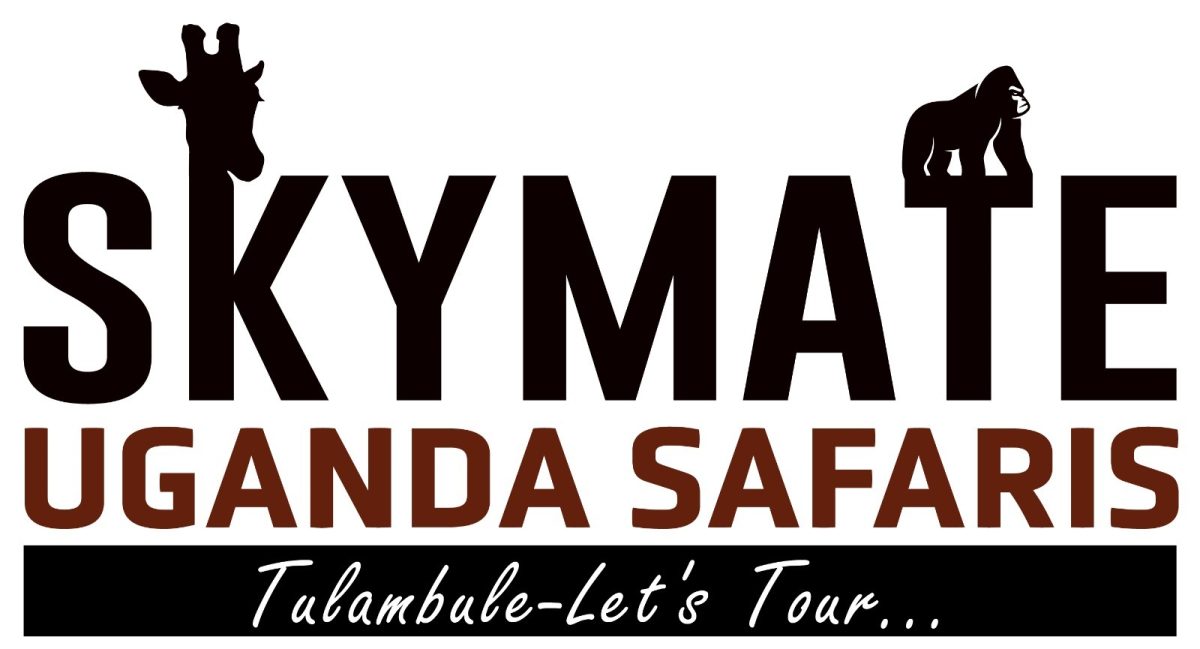The Semuliki Valley (including Semuliki National Park and Semuliki Wildlife Reserve) is one of the most beautiful and remote wilderness regions in Uganda.
The Semuliki Valley is situated near the snow-capped “Mountains of the Moon” in western Uganda, about 6-hour from the capital city, Kampala.
Unspoiled by mass tourism, Semuliki Valley is considered by many (especially avid birders) to be one of Uganda’s best-kept secrets. Here, the great forests of Central Africa gradually give way to the rolling savannas of the East.
Semuliki is part of Africa’s Albertine Rift valley which runs the short length of Semuliki River from where it enters Uganda until it empties in Lake Albert.
Semuliki National Park and Semuliki Wildlife Reserve are two distinctive wildlife reserves. The contrasting character of the two wilderness area, from ancient rain-forest jungle to gentle savanna ensure an astonishing combination of weird, wonderful, endemic, and unusual wild creatures.
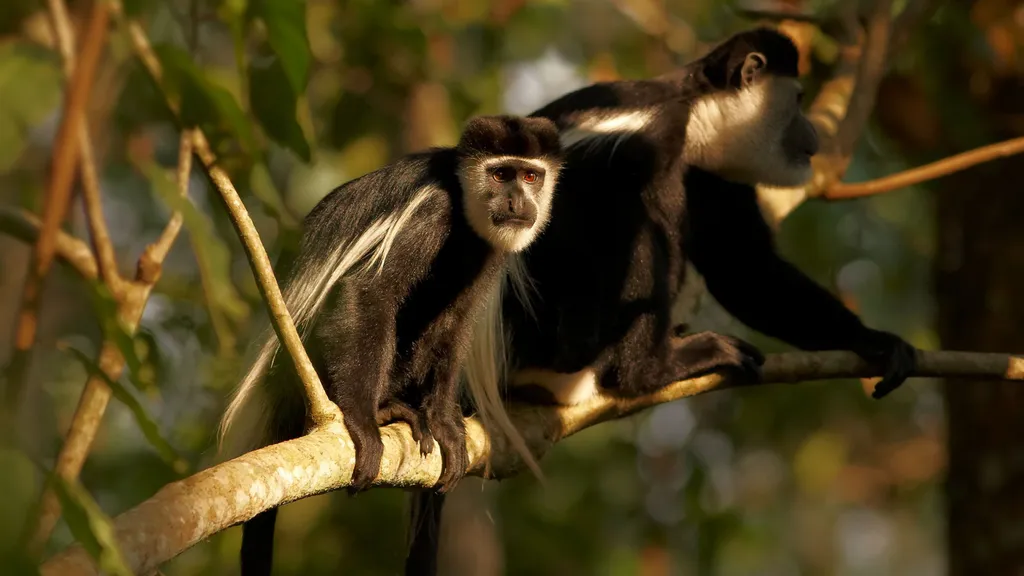
Semuliki National Park
The 220 km2 Semuliki National Park is situated in Bwamba County, Bundibugyo District on the border with the Democratic Republic of Congo.
The national park was gazetted in 1993. It protects the easternmost extension of the Great Ituri Forest, which stretches more than 500 km to the Congo River. Semuliki represents the only true tract of lowland tropical forest in East Africa.
It’s landscape is dominated by Uganda ironwood trees, interspersed with lush palm trees and verdant ferns.
Set against this backdrop of green, are over 350 species of colourful butterflies that flutter between shafts of light. And there is a variety of rare forest birds.
The dark woods are broken by open patches of papyrus swamps, the amazing scenery of the Sempaya Hot Springs, and the dramatic views of the Rwenzori Mountains, a World Heritage Site with the third point in Africa (after Mount Kilimanjaro and Mount Kenya).
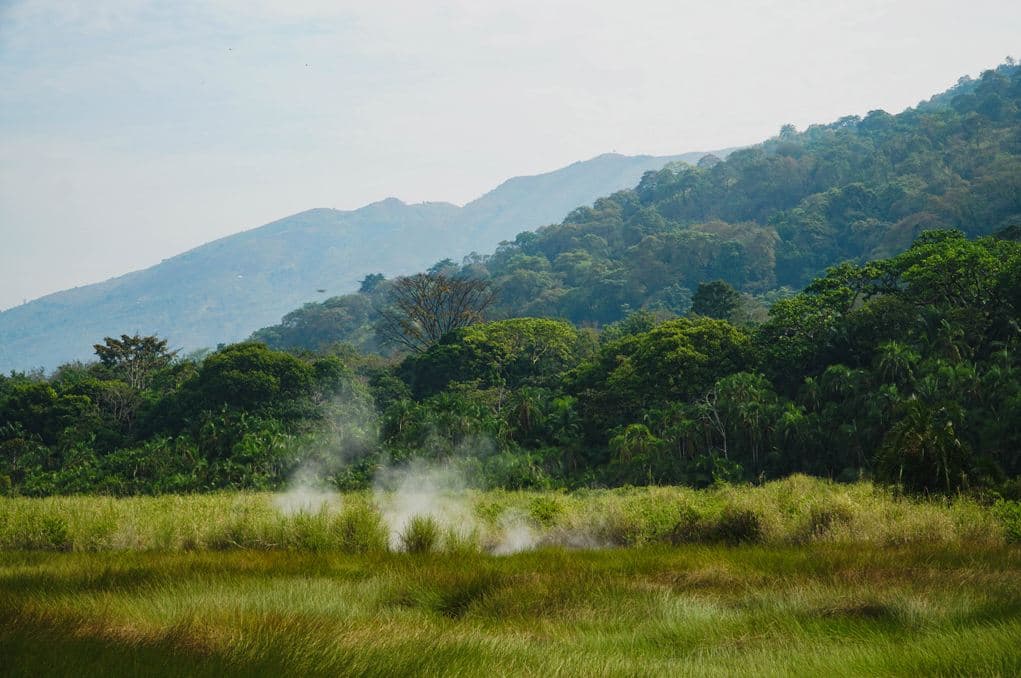
Semuliki Wildlife Reserve
In contrast to verdant rainforest jungle of Semuliki National Park, most of Semliki Wildlife Reserve (formerly Toro-Semliki Wildlife Reserve) is a mosaic of dry savannah grassland. The reserve also features small patches of forest, riparian woodland and Borassus palms.
Herds of buffaloes, elephant, and antelopes gather in the plains beneath the looming peaks of the Blue Mountains in the neighbouring Democratic Republic of Congo to the west and the dramatic slopes of the Great Rift Valley escarpment to the east.
While names like Queen Elizabeth, Murchison Falls, Kibale Forest and Bwindi Impenetrable National Parks command the Uganda wildlife safari scene, the Semuliki is perfectly positioned between the two – offering the unique opportunity to immerse your self in a land before time.
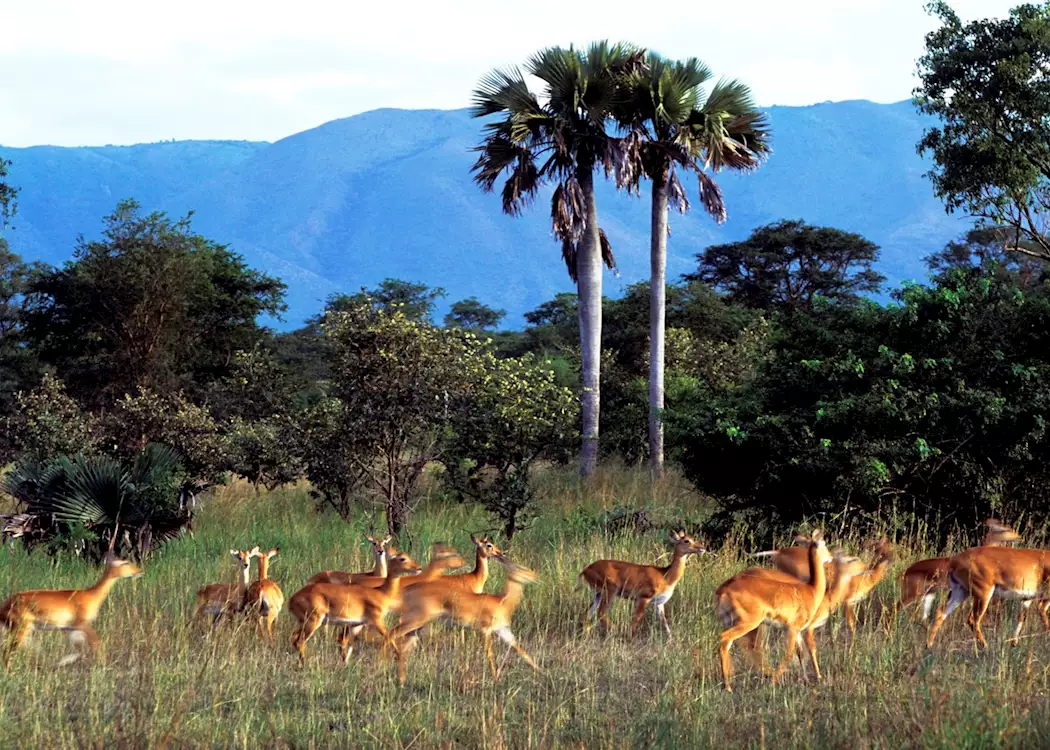
Birds In Semuliki Valley
Although Semuliki National Park and Semliki Wildlife Reserve are home to some of the more iconic mammal species on the safari checklist, the Semliki Valley is best known for offering remarkable birding tours in Uganda.
Uganda is the prime birding destination in Africa with over 1090 species, and many of the country’s most exciting species can be found in the west, where forests meet savannah.
Over 435 species of Uganda birds have been recorded in Semuliki National Park alone. 216 of these are true forest birds.
Semuliki also provides a habitat for 131 of the 144 Guinea –Congo forest Biome bird species, including nearly 50 species that cannot be found anywhere else in East Africa!
The Congo serpent eagles haunt the dark understories of the Forest, while the lyre-tailed honeyguide attracts many birds lovers here every year.
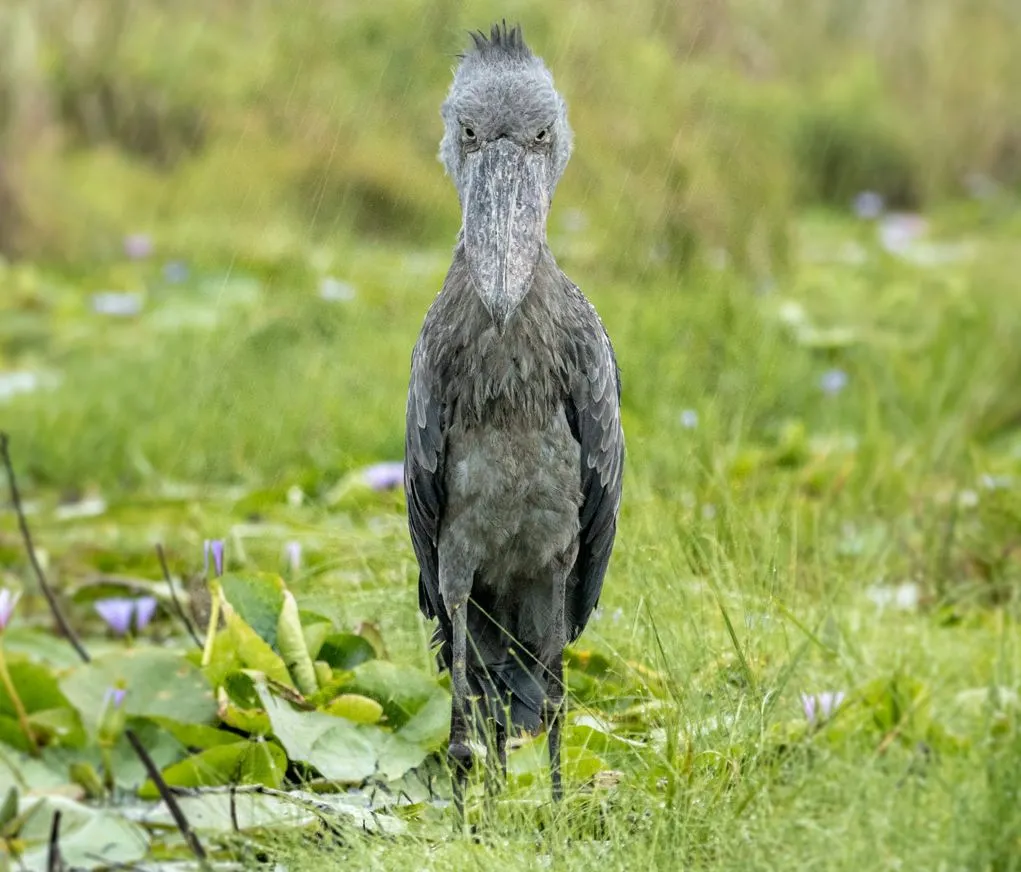
An assortment of hornbills, including the red-billed, white-crested, white-thighed, black-wattled, black dwarf, black-and -white casqued, and the piping hornbills are generally more conspicuous, and the Nkulengu rail is an invariable highlight, as are the shoebills of nearby Lake Albert.
Red-throated bee-eater, spot-breasted ibis, Oberländer’s ground thrush, piapiac, blue swallow, snowy-headed and blue-shouldered robin-chats, red-rumped tinkerbird, White-bellied Robin-chat, yellow-throated nicators, Equatorial Akalat, African piculet, Bate’s nightjar — the “specials” bird list of the Semliki Valley is enough to have birdlovers itching to reach for their binoculars.
Animals In Semuliki
Beside the amazing birdlife, Semuliki’s mammal life is also fascinating.
Forest rarities like the red-legged, sun fire-footed rope, Beecroft’s and Pygmy Scaly-tailed flying squirrels share their arboreal space with Mona Monkeys, Olive baboon, Vervet monkey, grey-cheeked mangabeys, mantled guerezas, red colobuses, red-tailed monkeys and De Brazza’s monkeys.
elusive water chevrotain (also known as the Fanged deer) and African Civet lurks in the undergrowth along with a host of duiker species, including the Bay duiker.
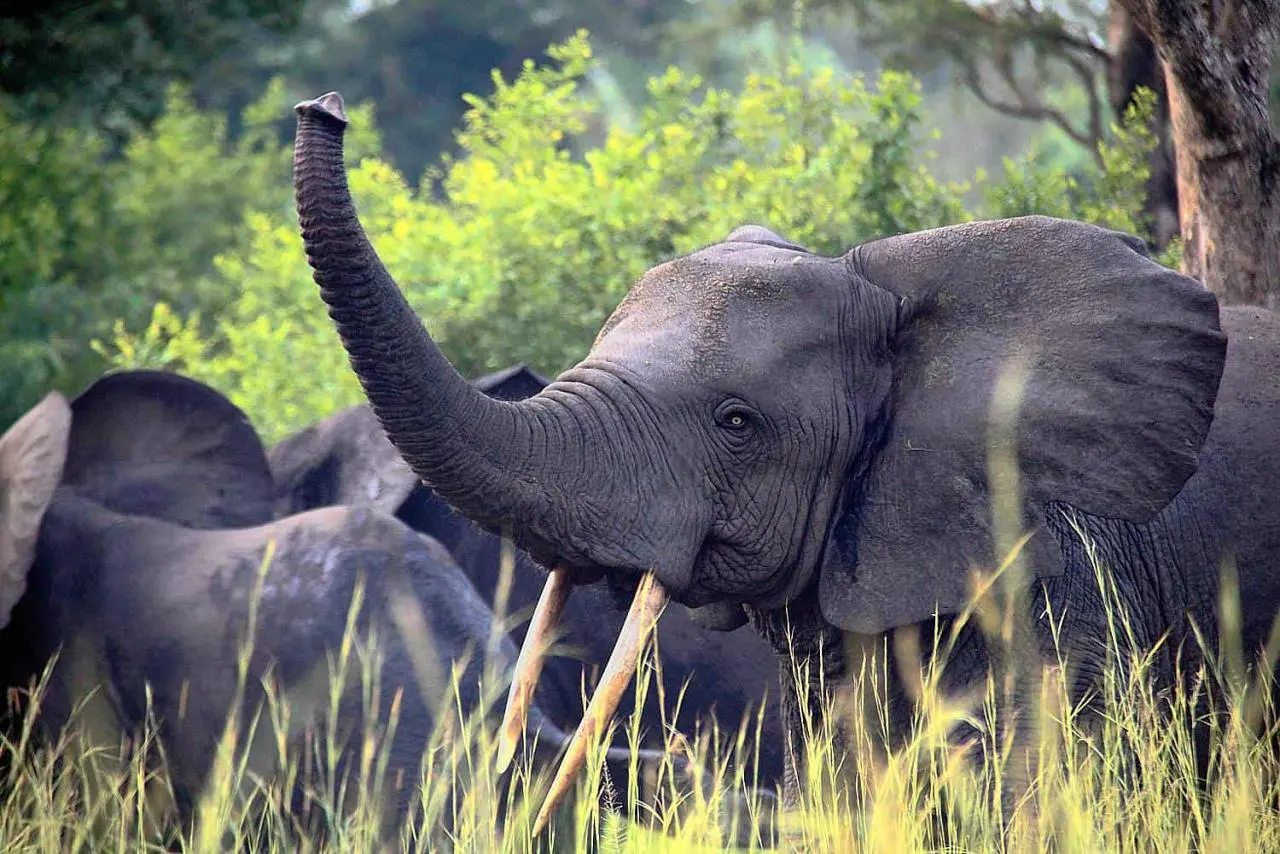
Encounters with the larger residents like African buffalo and African elephant (including both forest and savannah varieties) are intermittent, and Lions are more commonly heard than seen.
However, large herds of Ugandan kob (Uganda national animal) are common in Semliki Wildlife Reserve. Both protected areas are home to populations of chimpanzees.
And while they are less habituated than those of nearby Kibale Forest, chimpanzee treks are among the activities on offer.
The chimpanzees in the reserve are of particular interest to the scientists of Indiana University’s Semliki Chimpanzee Project, as they survive in an unusually arid habitat.
Semuliki National Park Hot Springs
Encircled by forest and beautiful palm trees, the Sempaya hot springs are situated not far inside Semuliki and are accessed via a short boardwalk that runs through the forest.
As the most popular attraction of the national park, the two hotsprings are a testament to the region’s rich geological history and hold a deep cultural significance to the local Bamaga people.
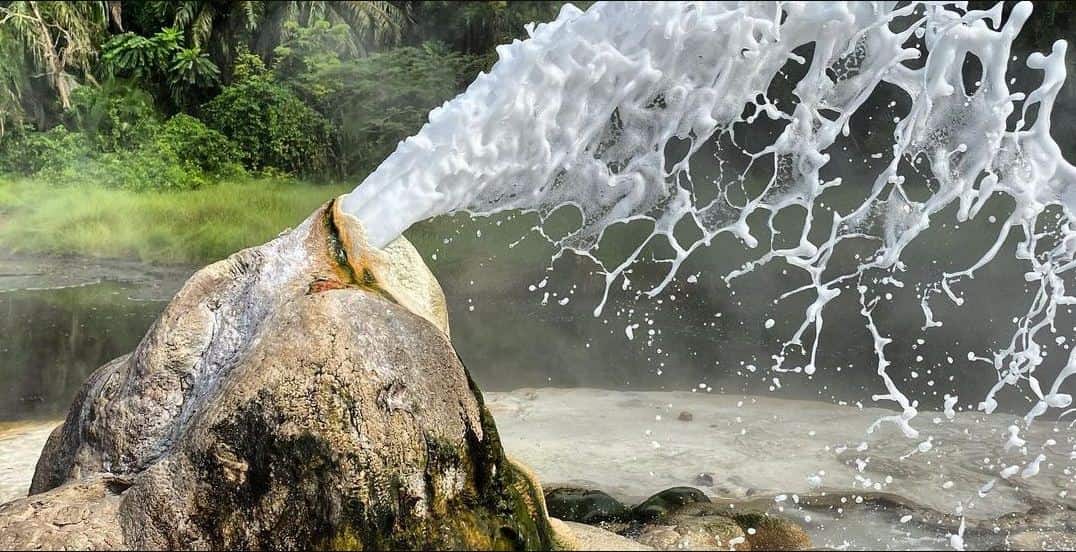
The “male hot spring” — called Bitende — is a calm pool some 12 metres in diameter, whiles the “female hot spring” — called Nyasimbi — is geyser that spouts up to 2 meters into the air from an opening in a low salt sculpture.
The emerging water has a temperature of over 100 °C and the surrounding pools are hot enough to boil eggs in 10 minutes. The Bamaga people believe their female ancestors live beneath Nyasimbi and their male ancestors beneath Bitende.
Annual rituals are carried out at the springs to appease these spirits. Alongside the springs, mineral-encrusted swamps attract forest-dwelling mammal’s searching for au natural dietary supplements.
What To Do In Semuliki National Park & Reserve
With its relatively low densities of large mammal species, Semuliki National Park and Semliki Wildlife Reserve are not the best choices for first-time safari-goers.
However, if you are a birder or you have a genuine capacity to appreciate Africa’s more unusual offerings, there are few destinations as delightfully unspoilt and jaw-droopingly scenery of Semuliki Valley. Furthermore, a few days spent in Semuliki National Park and Wildlife Reserve can easily be combined with:
- gorilla trekking adventures in Bwindi or Mgahinga Gorilla National Parks
- chimpanzee trekking tours in Kibale National Park
- Big Game viewing safari in Queen Elizabeth National Park, Lake Mburo National Park, or Murchison Falls National Park.
Much of Semuliki Valley exploration is done on foot, with both the national park and reserve offering guided trails of varying lengths and difficulty levels.
As such, a strong pair of comfortable hiking shoes is essential! This hike can be tailored to your interest (a birding or primate focus, for example) or simply to take in the stunning scenery of the surroundings.
Wildlife safari day game drives and night drives are offered in Semliki Reserve, along with boat cruises on the crystalline waters of Lake Albert, in search of the incredible shoebill stork.
Where To Stay In Semuliki Valley
You can visit Semuliki National Park even if you are staying in Uganda safari lodges or tented camp (accommodation) in Fort Portal town – or even Kibale Forest National Park if you don’t mind the time on the road.
However, it is best enjoyed by spending a few nights at the wonderful Semuliki Safari Lodge, a luxury lodge which is located in Semuliki Wildlife Reserve.
The lodge offers a unique lodging experience in African designed thatch cottages. It evokes the spirit of the old explorers and piques the curiosity of arriving visitors.
The location is as remote as it is unique: in the middle of nature with quite some wildlife around it. Semuliki Safari lodge has a maximum capacity of 18 guests, leaving guests with an unforgettable experience of life in the true wilderness.
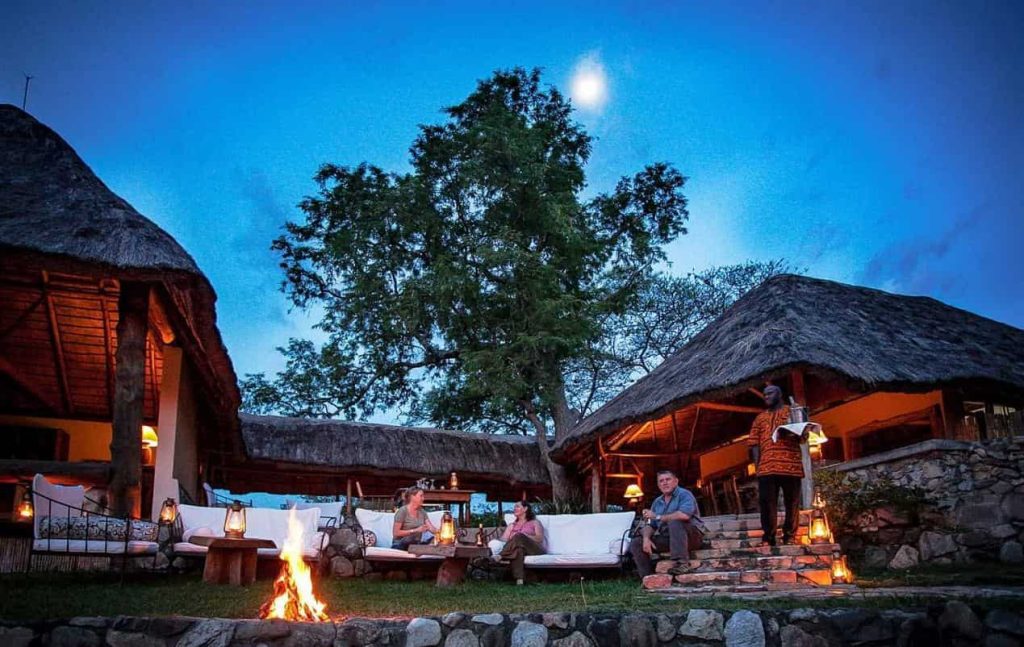
Semuliki National Park Weather
Semuliki experiences an average rainfall of 1,250 mm, with peaks from March to May and from September to December. During the rainy season, many areas of the park experience flooding. The temperature at the Semuliki National Park ranges from 18 to 30oC – 64 to 86oF, with relatively small daily variations.
How To Get To Semuliki?
By Car: You access Semuliki via Kampala – Mubende – Fort Portal road which is about 355kms (5-6 hours) drive. Once in Fort Portal town, Sempaya gate is 52kms two 2 hour drive through a winding marram road through the lower ranges of Rwenzori Mountains. Please note that a 4WD safari vehicle is recommended for the entire journey.
By Plane: Flights can be chartered from Entebbe International Airport or Kajjansi Airfield in Kampala city. It can take about 40 minutes to reach and land at an airstrip in Toro Semliki Wildlife Reserve from Entebbe or Kajjansi.
